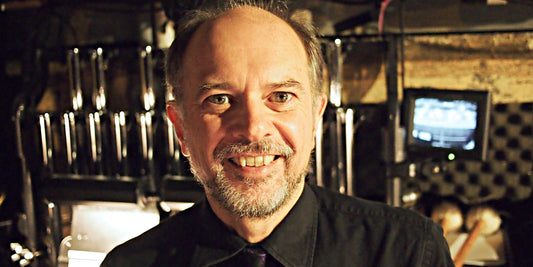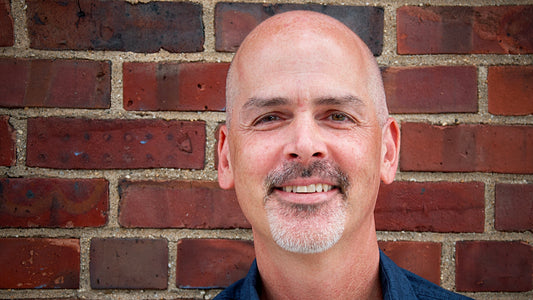
My Experiences Recording a Broadway Cast Album
By Jared Schonig
I’ve held six Broadway chairs of my own and have been fortunate to record a cast album for each one of them.
One album won a Grammy award and another was a Grammy nominee. These albums have been produced by multi-Grammy Award-winning legends, movie directors and even the composer of the show. Although most Broadway shows record cast albums, some do not, so I feel very lucky to have been part of a select group that has documented the purely musical aspect of musical theatre.
Although performing live is the best feeling for me, being in the studio is a close second. Broadway cast albums are made at the very highest level. You work in the very best studios in New York, you usually have nice catering, you get paid well, and you are working with a top-notch producer. There are definitely some challenges as well - which I will get into - but the for the most part, it’s an amazing experience.
As a drummer... I can’t load out my drums from the pit at the theatre and bring them to the session. I’ve brought some cymbals to cast album sessions a few times, but never drums...
Gear is an interesting part of the recording process. Every other instrumental musician has the ability to bring his or her instrument to the session. As a drummer, however, I can’t load out my drums from the pit at the theatre and bring them to the session. I’ve brought some cymbals to cast album sessions a few times, but never drums; so each time I work on a cast album, I'm generally playing on drums I don’t know. Now personally, I enjoy how playing on an unfamiliar kit mirrors the challenge of being on tour dealing with each club’s “drums du jour.” But it’s a bit different when you are documenting your show on record forever.

Jared's setup for the Broadway production of Pippin.
The most common way of securing drums for a session is that the contractor will rent drums from one of the rental places in town. Over the years you’ll get a feel for some of these drums and have certain preferences and might have an idea of what might work for a certain show. Sometimes you use a studios house kit. Sometimes I might prefer a certain studio’s kit if I have the option. Nonetheless I always like to bring fresh tom heads and one of my own snares to ensure I feel the most comfortable. I may not actually change the heads as I am not a huge fan of playing super fresh heads on certain drums, but sometimes the heads will be so old and decrepit that its necessary. Always be prepared. Depending on the show I might have a huge percussion set-up as well, so showing up early and having a diagram or picture of how you want to set up is very helpful to the engineers. It might take a couple of hours to get your studio setup just right in order to play the same difficult passages you are accustomed to playing on your own setup at the theatre.
Sometimes producers and the creative team want things to be different on an album musically from the “norm” and that’s okay. You have to be willing to experiment and bring creativity to this process just as one does during the rehearsal process when you are developing the material.
The musical experience of recording a Broadway cast album ranges from easy to difficult depending on the circumstances. I find that the two factors that contribute most to the quality of the experience are: 1) how good the band is; and 2) how soon after you started the show you record the album. Sometimes these two factors are related as well.
I had a cast album experience early in my career in which things were not happening. The band had to follow a keyboardist/conductor (who was mostly playing rather than conducting) and the time wasn’t happening. He was determined to make the recording feel just like the live show. He would conduct songs to speed up and flex the time to create excitement. The producers weren’t having it. It didn’t feel good and felt frantic and rushed - not what they wanted to document. The producers instituted a click track and we continued to record. It was a very uncomfortable experience for the conductor (and the rest of the band) because he didn’t have much experience with playing “on the grid;” it was foreign to his way of thinking about the show. For myself, the only way to get comfortable in that session was to gently “dial him out” of my mix and continue to record. Eventually everything worked out and ultimately it’s a great sounding and feeling record.
I had another experience where the drum booth was in a completely different studio hundreds of feet away from the main room at the studio. We recorded the whole session live with everyone (including all the singers), which is atypical. Usually the band tracks first (sometimes with certain soloists in studio to provide certain vocal and dialogue cues) and then the actors and ensemble overdub over those tracks. I had to use a large video monitor to get my cues. I was following a stick conductor and the music we were recording was very orchestral at times and jazzy. There was also some latency (lag) in the video feed so it took me a little while to get right with the band. Dealing with all the singers and their sense of time and feel was an added wrench. And to top it off, no click on anything! But again, it turned out to be a fantastic sounding and feeling record.
You may think you know your show incredibly well but in the studio you’ll start to hear things you never knew were happening in the music.
Sometimes producers and the creative team want things to be different on an album musically from the “norm” and that’s okay. You have to be willing to experiment and bring creativity to this process just as one does during the rehearsal process when you are developing the material. You may think you know your show incredibly well but in the studio you’ll start to hear things you never knew were happening in the music. That’s a really neat feeling. Members of the band have such a personal, “dialed-in” headphone mix for playing the live show night after night. When you are in the studio you are forced to reset and open your ears so much more. In live theater you never really know if the difficult passage you are playing is actually translating in the house. In the studio, the producer(s) are hearing everything with the utmost clarity. You are under a microscope. Ultimately, it’s essential that you stay open to and know when to defer to the ears of someone else who has a much better understanding of the big musical picture.
Until the next one....
Bio
Grammy-Award winning drummer, composer & bandleader Jared Schonig has toured and/or recorded internationally with Nicholas Payton, Dr. Lonnie Smith, Donny McCaslin, Darcy James and Argue Secret Society, Laurence Hobgood, Tim Hagans, Fred Hersch, Wycliffe Gordon, Tom Harrell, Joe Locke, and Ernie Watts among others.
A favorite among vocalists, Schonig has toured with Grammy Award-winners Kurt Elling, The New York Voices, Kristen Chenoweth, Cynthia Erivo and singer/songwriter Donna Lewis, in addition to rising vocal supergroup Duchess, Spencer Day, Laila Biali and Shayna Steele.
He has performed around the world from Carnegie Hall to festivals in Zimbabwe. Schonig co-led The Wee Trio, which released five critically-acclaimed albums over the past 8 years. The group received praise from numerous publications and toured internationally. He recently recorded two solo albums of original music to be released next spring.
When at home in New York City, Schonig is a fixture in both the jazz and Broadway scene. He recently held the drum chair for the critically acclaimed Tony, Grammy and Emmy-award winning Broadway Revival of The Color Purple and is currently playing drums and percussion for Moulin Rouge! The Musical.
Jared is also an in-demand drummer/percussionist for studio recordings, jingle sessions and other commercial music recordings.
Jared with The Wee Trio (with Nir Felder) performing "Gibbs Street".
https://www.youtube.com/watch?v=3MvD6gzEFtk
"Poinciana" Drum Solo.
https://www.youtube.com/watch?v=jLmPN2HnCQA
"I'm Here" from The Color Purple.
https://www.youtube.com/watch?v=E2ok14OZhdg



